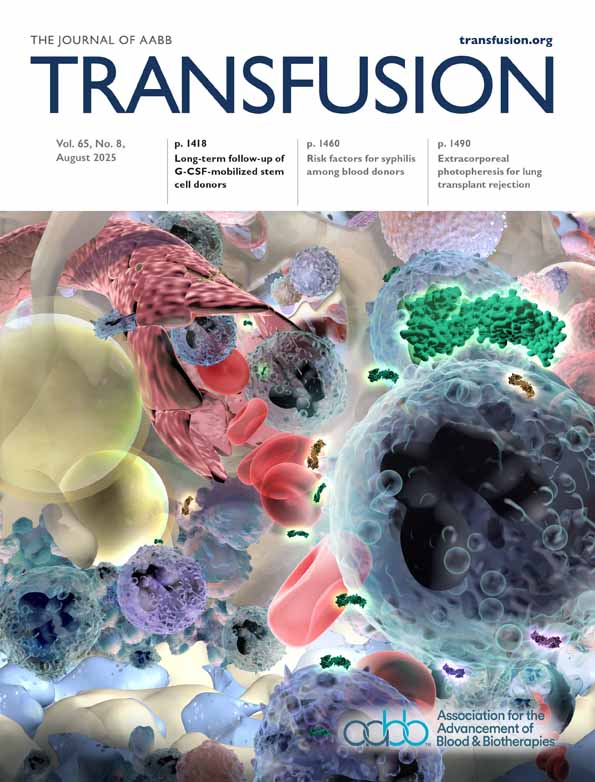High deferral rate for maternal–neonatal donor pairs for an allogeneic umbilical cord blood bank
Supported in part by grant number PO1-HL-54516-02 from the Heart, Lung, and Blood Institute, National Institutes of Health, Bethesda, Maryland.
Abstract
BACKGROUND: To fully evaluate the safety and efficacy of umbilical cord blood (UCB) as a source of hematopoietic progenitor cells, UCB banks are being established worldwide to provide a readily accessible resource of stem and progenitor cells for allogeneic transplantation. Guidelines for UCB donor criteria have been proposed to minimize the possibility of disease transmission to UCB recipients.
STUDY DESIGN AND METHODS: In preparation for the establishment of an allogeneic UCB bank, 285 maternal–neonatal donor pairs were evaluated in our tertiary-care hospital, which was chosen because of the high percentage of African Americans among the maternal population. Maternal, neonatal, and family histories were obtained by confidential interview and medical record review to determine the number of eligible donor pairs on the basis of a conservative interpretation of proposed donor criteria.
RESULTS: Only 44 percent of donor pairs were considered eligible. The most common deferral factors were maternal, and they included fever at delivery, history of chronic disease, and history of sexually transmitted disease. In most cases, more than one deferral factor was identified.
CONCLUSIONS: High-risk maternal populations, which may provide access to ethnic minorities targeted for some UCB banks, may contain low percentages of eligible donors. Further refinement of donor criteria will be important in the evolution of UCB banking and transplantation.




